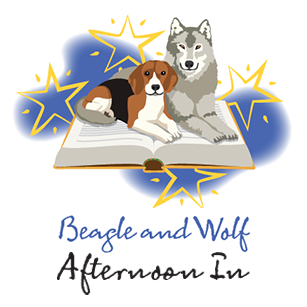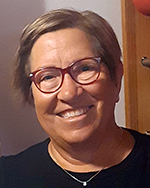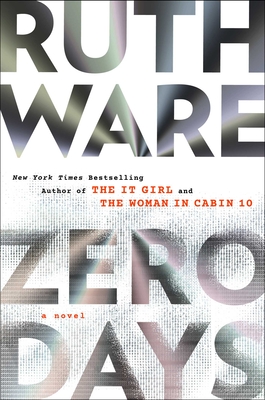|
|
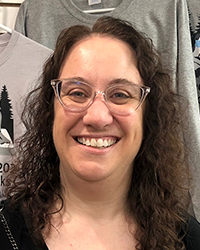 Jen Jen
|
|

|
|
Circus of Wonders
Elizabeth Macneal
For months, this book caught my eye every time I ate lunch because it was right at eye-level in front of me. I would think, “Yeah, but who needs a circus book,” which doesn’t make a lot of sense because I’ve liked all the so-called circus books I've read. I finally gave in to this book and I’m so glad I did. The book is set in England in the 1860s, when circuses were popular entertainment. Nell is born into a poor family and has the unfortunate luck of having birthmarks all over her body. There isn’t a thing wrong with Nell, she just has these birthmarks. Despite being stared at and mostly rejected by most people, Nell has a decent childhood, thanks to her brother. Once her brother becomes engaged to be married, Nell feels abandoned and her father, who has always resented her because his wife died birthing her, decides to sell Nell to a circus for 20 pounds. To give you an idea of how little money that was, the average circus performer earned 80 pounds per week. At first, Nell hates the circus, hates her father for selling her, and suspects her brother may have been in on the sale. Eventually Nell makes friends and settles into circus life. As you might guess, the book isn’t really about the circus, it’s about people, their relationships, their hopes and dreams. It’s above love and friendship and the twists and turns that happen over the course of a life. I listened to this on libro.fm and I can highly recommend it as an audiobook.

|
| |
|

|
|
Case Study
Graeme Macrae Burnet
This is another novel set in England, this time in London in 1965. A well-known psychotherapist, Collins Braithwaite, was the therapist of the sister of our protagonist. The sister dies by suicide and our protagonist feels that Dr. Braithwaite is responsible. In order to do her own investigation, the surviving sister creates an alter ego named Rebecca Smythe in need of Dr. Braithwaite’s therapy. This is one of those psychological dramas. If you liked books like Girl on the Train, this one will be right up your alley. The author has the complete and total power to make you feel like the characters you’re reading are real. |
| |
|
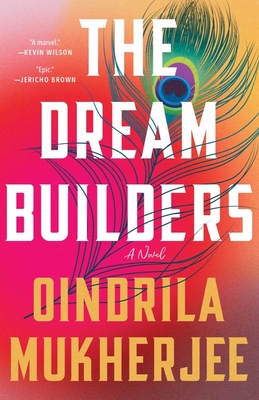 |
|
Dream Builders
Oindrila Mukherjee
Maneka Roy was born in India, moved to the States as a young woman, and has lived and worked in the U.S. for many years. When her mother dies, Roy decides to return to India for the summer. While Maneka is our protagonist, she doesn’t actually narrate that much of the book. The book opens in her voice, but then every chapter is narrated by another character, ten in all. The result is a very well-rounded storytelling approach. Maneka spends time with her father in a city her parents moved to after she left home, a new progressive city called Hrishipur, which continually breaks its promises of building new housing. It’s fascinating to not only see India and its culture through the eyes of its own people, but it’s so fascinating to see India through the eyes of Maneka, who has thoroughly become an American. This book is not heavily plot driven, which isn’t to say exciting things don’t happen. They do, but the point of the book, I think, is much more Maneka’s internal journey rather than what’s happening around her while visiting India. |
| |
|

|
|
No Land to Light On
Yara Zgheib
Sama and Hadi are both Syrians. They meet in Boston, fall in love, and decide to start a family together. When Sama is five months pregnant, Hadi’s father dies unexpectedly, and Hadi flies back to Jordan for the funeral. And then, all hell breaks loose. Sama is trapped and trampled in a demonstration, causing an early delivery. Hadi was detained by Customs and Border Protection and deported. The narrative goes back and forth in the voices of Sama and Hadi. It’s a love story between two young people who are unfairly separated. It’s a hate story about the way this country treats brown people. And believe it or not, it’s a story about kindness. This book is incredibly well-written and paced. |
| |
|

|
|
No Man’s Land
John Vigna
This is not a book for everyone. It’s gritty, it’s violent, and very much in the vein of Cormac McCarthy. This story is divided into 5 books. I found the first book to be the be the most difficult in terms of grit and violence. It’s necessary to set up the reader for the rest of the story, which is about Davey. Davey is a young woman who was raised by a false prophet and his followers. The group travels from town to town, puts on a show of sorts, baptizes the locals, takes in a fair amount of money, patronizes the local saloons and brothels, and moves on. Davey is not particularly happy with this life and doesn’t like or trust Revered Brown. She’s a tough young woman who can fend for herself and is a pretty good shot with a bow and arrow. The time period of this story is the late 1800s and early 1900s, a time when this country was still pretty rugged. |
|
|
| |
|
|
|
|
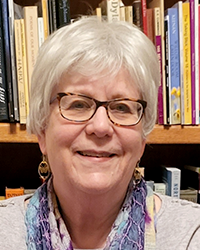 Sally Sally |
 |

|
 |
Don’t Cry for Me
Daniel Black
Unfortunately, it’s not unusual to hear of a father struggling with his son’s sexual orientation. In Don’t Cry for Me, there’s more going on than Jacob Swinton learning his only child, Isaac, is gay.
Jacob is alone and dying of lung cancer. He’s filled with regret about his relationship with Isaac. The two have been estranged for many years.
I think all parents have regrets, and wish they’d done some things—or many things—differently in raising their children. Jacob’s regrets are broader than this, though. He begins a letter to Isaac—and this letter is the body of the book. In it, he reviews his entire life Not only his regrets, but what he has learned, however belatedly, and the love he has for his entire family, living and dead.
Jacob begins with the early years of his own life. His mother was murdered by his father, and Jacob and his brother were raised by their maternal grandparents on a farm in rural Arkansas, just two generations from slavery. While respected in their small Black community, the grandfather is harsh, strict, and rigid. The grandmother is quiet, oppressed, and meek.
A young woman named Rachel visits relatives in the area, and eventually she and Jacob marry and move to Kansas City. The lessons his grandparents taught Jacob about raising children and a marital relationship are ingrained in him, much to his detriment. He can’t accept that Isaac is gay, and he can’t accept a secret Rachel kept from him for many years.
The story is heartbreaking. The ways Jacob reacts to his son and wife are painful, but the reader can see they are a direct result of his unexamined upbringing.
Jacob’s letter to Isaac is a confession of his failures. It ends with the wisdom he has gained during his life and a charge for his son which feels like a blessing.
The language of the book is both spare and poetic, and the book is hard to put down. It contains hope for the reconciliation which follows taking stock of one’s life, and the possibility for healing. It’s a powerful book, and worth reading.
|
| |
|
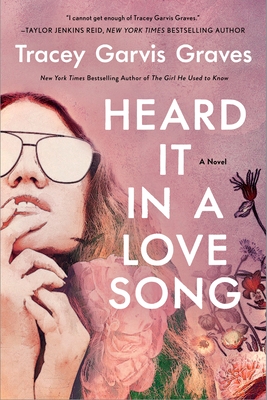
|
|
Heard It In a Love Song
racey Garvis Graves
One of the fun things about Heard It In a Love Song is that it’s set in Rochester Minnesota. But nary a reference to the Mayo Clinic! Layla is 35, a music teacher at an elementary school, and recently divorced. Before her ten-year marriage, she’d been the lead singer in a band which was so close to making it big. Gradually, over the years of her marriage, her dreams were put on hold as her husband followed his.
She’s on her own again, making her new house a home, buying a guitar and playing again, and trying to enjoy her new-found independence as a single person. Somehow, Layla and her friend Tonya have pulled bus duty every single morning at school. These scenes ring so true and are the funniest parts of the book.
One morning on bus duty, Layla meets Josh, the father of one of her students. Josh is newly separated and also learning how to navigate as a single person with shared custody of a child. Josh and Layla exchange pleasantries each morning and gradually become friends.
As you can imagine, the book follows their relationship as friendship slowly grows and blossoms. Tracey Garvis Graves is known for writing books with happy endings, but that doesn’t mean they don’t have meat. If you or your group are ready for a feel-good book, this is the one for you! |
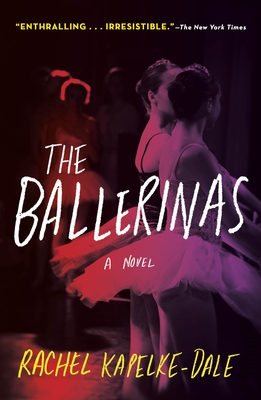 |
|
The Ballerinas
Rachel Kapelke-Dale
The Ballerinas took me into a world which I knew nothing about. As someone who is tone deaf and has no sense of rhythm, the lives of professional dancers is something I can’t even imagine.
The book is narrated by Delphine. The daughter of a famous ballerina, she was schooled at the Paris Opera Ballet, her mother’s school and company. Her closest friends are Lindsay and Margaux, also dancers in the company. When the book opens the three women are 36 and Delphine has just returned to Paris. Thirteen years earlier, Delphine left behind her prestigious spot as a soloist and moved to St. Petersburg. She has returned to choreograph a ballet which she hopes will be the beginning of a career as a choreographer.
The three friends reunite, but much has changed—in Paris, in the ballet company, and between the three.
The book moves between the time when they were teenagers and the present day. Along the way, female friendships are explored in all their complexities. It’s clear that there are secrets between the three and a certain amount of guilt. This is slowly explored and only revealed near the end of the book. The young ballerinas’ lives are filled with competition, as dancers are winnowed out each year, until only the best are left. Their lives are dominated by a drive for physical perfection, by ambition, and a slowly growing but always hidden sense of rage. There are also Me-Too issues.
It’s interesting to me that the cover of the hardcover is pastel pink, kind of Ballerina Barbie. The paperback cover is darker, and hints at the struggles of the ballerinas.
It’s an interesting read. Make sure you pay attention to the second sentence of the book. It may or may not be factual, but points to the struggles to unfold. |
| |
|
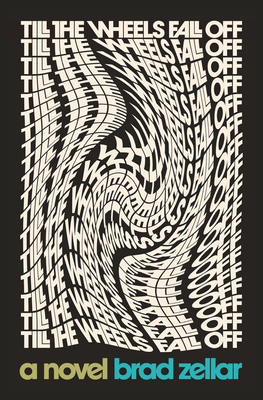 |
|
Till the Wheels Fall Off
Brad Zeller
Do you remember roller rinks? They were a thing when I was in junior high and for years afterwards. Once or twice a year our church youth group would go to a roller rink, and we’d tentatively but earnestly skate on a dimly lit rink to music only some of us knew. The very bravest among us would skate with a boy, but only for a song or two. Park Rapids had a roller rink, located right across Highway 71 from here. My niece broke her wrist there.
Matthew, the narrator of Till the Wheels Fall Off, actually lived in a roller rink during his formative years. His stepfather, Russ, ran the rink and he, Matthew, and Matthew’s mother lived in a tiny apartment across the hall. Matthew was a chronic insomniac, and frequently spent the nights skating with Russ and curating play lists from Russ’ extensive collection of records.
Time passed. Matthew’s mother divorced Russ and moved with Matthew to a nearby town. The book, by the way, is set in rural Minnesota, and the small towns in it are similar to those we’re familiar with. Once again, Matthew doesn’t fit in in school and has few friends. As an adult, he drifts along, much the way he did as a child and teenager. He returns to his hometown, reminisces about his unconventional childhood, and wishes he could reconnect with Russ.
Not a lot actually happens in the book, but it’s filled with wonderful characters. This is the quirkiest book on our Afternoon In list, and I say that in the best possible way. It deals with the themes of being neurodivergent, the meaning of family, and the role of memory and nostalgia in our lives. Additionally, it has a great soundtrack. What more could you ask for? |
| |
|
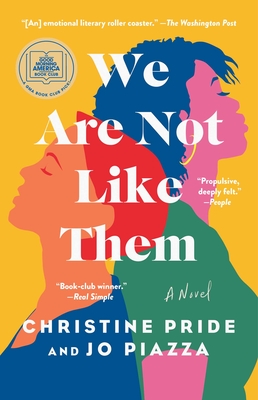 |
|
We Are Not Like Them
Christine Pride and Jo Piazza
I don’t have to tell you we live in a time when race relations in this country are very difficult. We hear news story after news story of black men and boys being shot and killed by police. Our own state was traumatized by the murders of George Floyd and Daunte Wright.
We Are Not Like Them deals with these issues through the story of Jen and Riley, who have been best friends since their day care days and as adults have remained as close as sisters. Jen, who is white, married young to a police office. After years of trying, she is finally pregnant. Riley is black and has pursued her dream of becoming a television journalist. She’s recently returned to Philadelphia to take a job at the top news channel.
And then a Black teenager is shot by two white officers. One of them is Jen’s husband, Kevin. Riley covers the story for her news station. She’s outraged by the shooting, and torn because of her friendship with Jen. Jen regrets the shooting but is terrified by the thought of her husband going to jail.
The book has two authors, a White woman and a Black woman, who have been friends for many years.
The book has the feel of great authenticity and integrity. Jen and Riley are fully developed characters honestly grappling with the issues facing them and their friendship. There are no easy answers to these issues.
This is one of the best books I read last year, and I believe it would be a great choice for book group discussion. |
|
|
| |
|
|
|
|
|
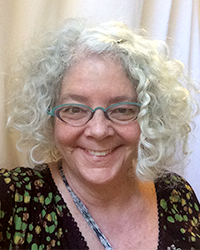
Hannah
|
|
I always try to read a book before I see a movie made from it. Recently I’ve experimented with the opposite. I’ve been reading books that are the sources of old favorite movies!
|
 |
|
Rebecca
Daphne du Maurier
“Last night I dreamt I went to Manderley again.” How often does a novel’s opening line make it to the start of a movie? “Call me Ishmael” and “It is a truth universally acknowledged…” don’t come to mind when you think of those movies, but any reference to Hitchcock’s classic Rebecca and the opening line goes through my head, along with dark images. Usually, movies based on books have to leave a lot out, but all of the plotlines in Rebecca are faithfully retained in the movie. I think this is possible because the book has so much atmospheric description. The languorous prose in the book is translated brilliantly by Hitchcock: it’s really fun to read it if you’ve admired his movie. (I tried to watch a remake from 2020 but turned it off after a half hour. Yeesh.)
You might not notice, but we are never told the new Mrs. de Winter’s first name though she’s the main character in the book. Du Maurier explains that she was having trouble deciding the name, and after a while she realized that not giving her one was an interesting challenge. |
| |
|
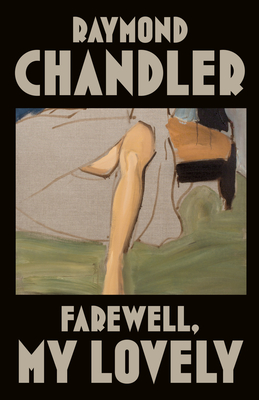 |
|
Farewell, My Lovely
Raymond Chandler
I love the movie: Robert Mitchum will always be Philip Marlow to me. But I never read the book until now. What a difference! The giant, devoted Moose Mallone is still searching for his Velma, and still runs into Marlow and hires him to find her. A few other characters and scenes, like those with the pathetic drunk Mrs. Florian, are more or less the same. But characters in the book are added and deleted, and there are many changes in the plot. This makes sense, because the plot is too convoluted to work in a two-hour film. Also, by 1975, when the film was made, the racism in the 1940 book had to go. The movie isn’t as hard-boiled as the book, but Marlow’s character comes through.
You have to be in the right frame of mind to read Chandler. He uses so many metaphors and colorful descriptions that if you compare the book to high literature, it will feel sort of silly. But if you relax into it, the language is delicious. Some of it makes it into the film through voice-overs in Mitchum’s distinctive voice: “The house wasn’t much. It was smaller than Buckingham Palace and probably had fewer windows than the Chrysler Building.” The atmosphere is also re-created through wonderful use of jazz, and with perfect art and set decoration.
They say it’s a mistake to judge movies by how closely they match books they’re based on, because they’re two different things. This book and movie are wildly different in details, but they end up delivering the same core. |
| |
|

|
|
Water for Elephants
Sara Gruen
I loved the movie starring Robert Pattinson, Reese Witherspoon, Christoph Waltz, and the biggest star of all: an elephant. The movie combines two villains from the book into one super villain, which works well. Other changes from the novel are minor: I enjoyed the book and the film equally. Gruen did a great deal of research and incorporates a lot of fascinating detail and amazing stories about American circuses in the 1930s. The book drips with atmosphere, and has romance, action, suspense… actually, the biggest star isn’t the elephant. It’s the circus when you consider that the ambiance and the plot’s incidents are based on historic facts. |
| |
|

|
|
The Great Santini
Pat Conroy
When I read this. I was blown away by how much more there is to the book than the movie. One character and his story line are dropped, but most of the important events in the book make it to the screen, and they do the best they can at bringing them to life. It’s just that what happens between the events, their context, is so important, as is getting inside of the minds of the people. Robert Duval deserved the Oscar nomination he received for his portrayal of the testosterone overloaded Marine pilot, but in the book, you get a nuanced understanding of the complex relationship with his son and the rest of the family. And the famous one-on-one basketball match between the two is even more riveting in the book than it is in the film. |
| |
|

|
|
An Ideal Husband
Oscar Wilde
I love love this movie. It has all the wit of The Importance of Being Earnest, but it also explores issues of morality and politics that resonate in today’s world. I recently listened to a reading of the script. The movie is on the whole completely faithful to the script, but in the original there’s a speech near the end that is shockingly misogynistic. If you enjoy reading scripts, as I sometimes do, I highly recommend this one. But then watch the movie to see how adroitly the screen writers dealt with the problem. |
|
| |
|
 |
|
|
|
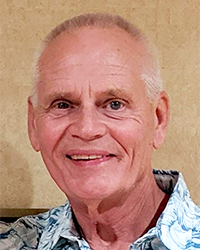
Lee |
 |
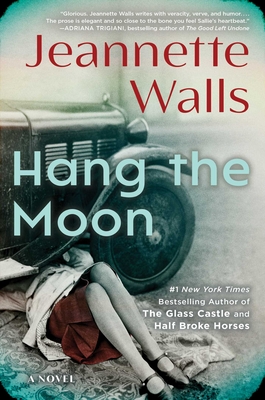
|
 |
Hang the Moon
Jeannette Walls
This is a rather convoluted story about the Kincaids, the ruling clan of fictional Claiborne County, Virginia. Sallie Kincaid is the daughter of Duke Kincaid, and much of the drama centers around the family’s involvement in the moonshine industry during the first years of Prohibition.
Walls’ first book, Glass Castles, was a memoir in which the members of her family, particularly the children, never really seemed to understand the degree to which the family was dysfunctional. [Note: If you have not read the book, you must.]
The Kincaids are wildly dysfunctional as well. It is difficult to provide a succinct description of the plot as there are twists and turns, and any description is likely to contain a spoiler. If you happen to be familiar with House of Tudor, you can find some marvelous connections.
The book may not be great literature, but Sallie Kincaid is a wonderful, dynamic character, and the novel makes for some good reading. |
| |
|
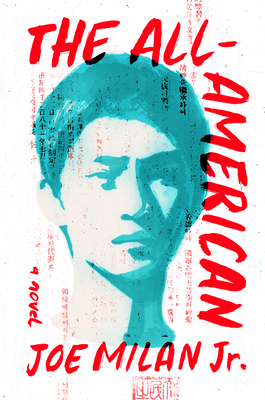 |
|
The All-American
Joe Milan Jr.
Bucky Yi is a 17-year-old Korean American, though perhaps only a Korean living in America. His family history is convoluted, and it is not entirely clear if he was ever legally adopted by his stepmother. As a result, an encounter with the law leaves him a deportee on a plane to Korea.
All Bucky really wants is a chance to be a college running back, and he is nearly completely unprepared to find himself thrown into an absurd, sometimes hilarious, sometimes bleak drama that leads him first to work in an ex-pat bar and then into the Korean Army.
There are more than a handful of unforgettable characters ... I mean, **really** unforgettable characters. There are family members, ex-pats, a fellow recruit, a twisted sergeant, a Korean intelligence agent, a former classmate, ...
In spite of all of this, it is really a serious coming-of-age novel that speaks to identity, and it is well worth reading.
This book will be released April 4.
|
|
| |
|
| |
|
|
|
|

Tim
|
|
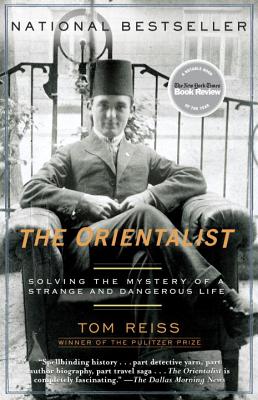
|
|
The Orientalist
Tom Reiss
Lev Nussibaum was born in 1905 into a socially prominent, progressive Jewish family living in the Russian city of Baku. The family made its money from oil. He received an excellent education, and because the family had both money and influence, they were able to mix freely in Czarist society, at least until the Revolution. Then they found themselves doubly classed as 'offensive', being both Jewish and "exploiters of the people.” Lev and his father became refugees in Berlin and Paris during the period between the wars (1919–1939.)
I'm not going to tell you more, so as not to spoil the book, though I will say this book showed me what it means to have to adapt, as an immigrant in a Europe steadily becoming more and more rabidly antisemitic. Oh, I also found that Lev Nussibaum, was a prolific writer, who left a trail of stories needing to be read. Has anyone heard of the novel, Ali and Nino, published in 1937?
|
| |
|
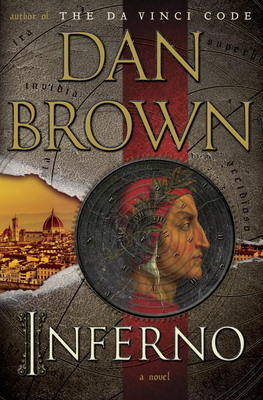
|
|
Inferno
Dan Brown
Dan Brown also wrote The Da Vinci Code, so you might have some idea of the serious power this writer has to grab you by the throat and take you on a breathlessly exciting ride of action and surprise. Brown is also one of the best writers, as far as researching the background information he uses brilliantly, to weave his story. In Inferno, he uses Dante Alighri's epic poem, Inferno (1320 AD), as the basic thread he weaves the story around, and all along he gifts the reader with rare insights: into the poem, about the Renaissance, and its art and history. It is quite simply excellent! Once you begin, you're hooked!
|
|
|
Would you like to be a guest reviewer?
Email Sally at sally@beagleandwolf.com |
| |
|
|
|
|
|
— page top —
|
|

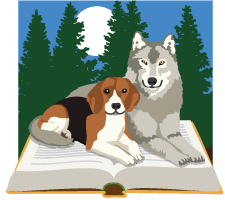






 Sally
Sally












